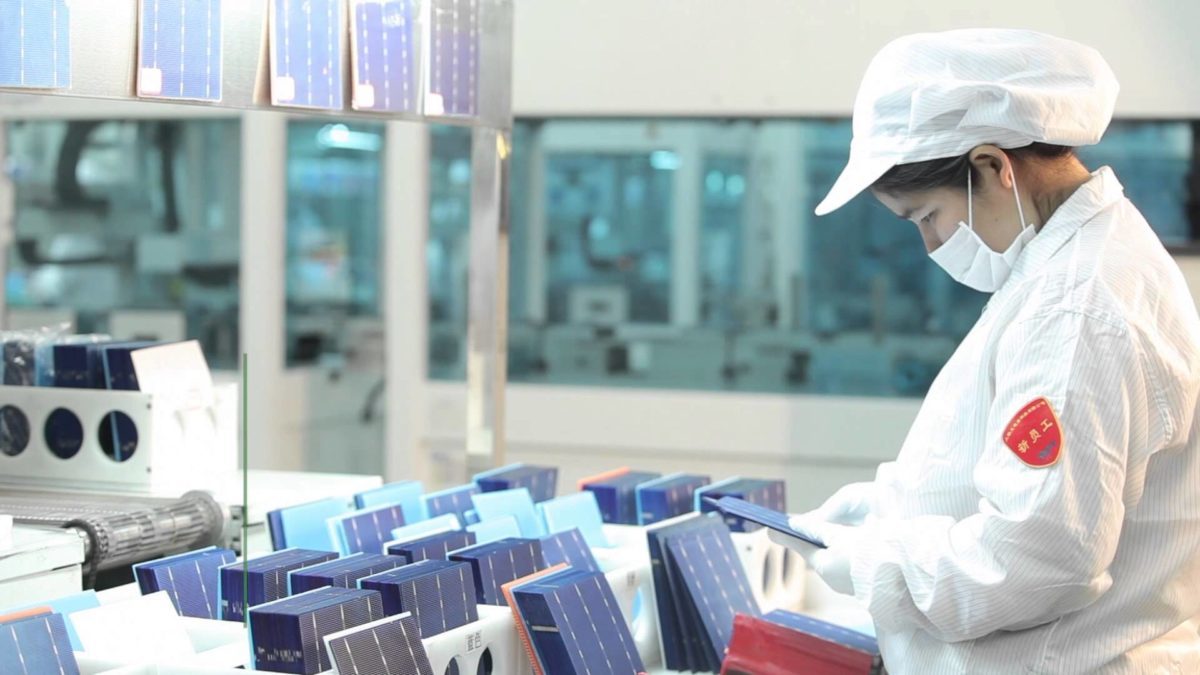China-based JinkoSolar, currently the world's largest solar panel manufacturer, has signed a strategic cooperation agreement with China’s petroleum giant Sinopec Star to jointly develop solar-to-hydrogen plants. “Sinopec Star plans to set up several industrial-scale solar-powered emissions-free hydrogen production facilities across the country, which will serve as proof of concept of solar hydrogen supplied from advanced solar technology be cost-competitive,” the companies wrote last week. According to JinkoSolar’s founder Kangping Chen, the collaboration could be the first-ever integration of next-generation N-type technology into solar hydrogen production.
Russia is ready to collaborate with the European Union on hydrogen projects, wrote the government-owned TASS news agency on Tuesday, quoting Russian envoy to the EU Vladimir Chizhov. “Gas pipelines of the newest generation, like the Nord Stream 2, can accommodate this in time, I would like to stress. Certainly, brownfield pipelines like the Ukrainian transit one will not provide such an opportunity,” Chizhov reportedly said.
All American Marine announced that Sea Change, a 70-foot, 75-passenger, hydrogen fuel cell-powered electric-drive ferry will operate in the California Bay Area. “This will be the first commercial hydrogen fuel cell passenger ferry in the world, representing a monumental step in the US maritime industry’s transition to a sustainable future,” the company wrote on its website. The vessel is equipped with a hydrogen fuel cell power package provided by Zero Emissions Industries, comprised of 360kW of Cummins fuel cells and Hexagon hydrogen storage tanks with a capacity of 246kg. The system is integrated with 100kWh of a lithium-ion battery provided by XALT and a 2x300kW electric propulsion system provided by BAE Systems. “While still working on permitting hydrogen fuel systems for maritime vessels with the US Coast Guard, the completed ferry will exhibit the viability of this zero-carbon ship propulsion technology for the commercial and regulatory communities.”
The Aerospace Technology Institute (ATI), which creates the technology strategy for UK aerospace, said that the optimal configuration for hydrogen will resemble the two-decade attempts started in the 19070s, which led to the twin-engine design. “I’m sure that with hydrogen we’ll have the same thing – we’ll have lots of different versions and once again we will learn from those, sensibly and safely. It is arrogant to suggest that we can go from zero to hero and find the right configuration in the first product we build, but I’m sure it will be safe,” wrote the British institute, quoting Tim Galsworthy, FlyZero chief engineer. Earlier this month, the ATI unveiled a concept aircraft which could allow passengers to “fly anywhere in the world with no carbon emissions and just one stop.” Developed by a team of British experts under the government-backed FlyZero project, the concept suggests the “huge potential” of green liquid hydrogen for air travel for global connectivity. “Realising a larger, longer range aircraft also allows the concentration of new infrastructure to fewer international airports accelerating the rollout of a global network of zero-carbon emission flights and tackling emissions from long haul flights.”
Popular content
ÖBB Postbus, the largest bus company in Austria, placed an order for five units of the Solaris Urbino 12 hydrogen model for the city of Villach in southeast Austria. “This is the first order placed under a framework agreement concluded at the beginning of 2021 and envisioning the option for the purchase of up to 40 vehicles of this type by the customer. The investment coincides with the execution of the H2 Carinthia project which aims to foster the development of hydrogen technology in this region,” ÖBB Postbus wrote on Wednesday. The framework agreement envisages the possibility of purchases by 2023. “Thanks to the technology used therein the bus can cover a distance of about 350 km completely emission-free under all kinds of conditions. Solaris shall deliver the vehicles by the end of November 2022.”
Italy’s Snam Group and the Torino Airport Management Company have signed a term sheet for the construction of a hydrogen-ready fuel cell system in cogeneration mode with a capacity of 1.2MW at Torino Airport. “The fuel cell, designed and developed by Snam's Hydrogen Business Unit in partnership with the American company FuelCell Energy, is the first of its kind and size in Italy that can be fuelled with variable percentages of hydrogen blended with natural gas for the combined generation of electricity and heat,” the Milan-based gas transmission system operator wrote on Wednesday. The company said that the fuel cell would be installed in the second quarter of 2023, adding that it can produce up to 1.2MWh of electricity and 840kWh of heat per hour and can be fueled by hydrogen mixed with up to 40% natural gas by volume. The value of the contract to be awarded should amount to around €14 million.
This content is protected by copyright and may not be reused. If you want to cooperate with us and would like to reuse some of our content, please contact: editors@pv-magazine.com.


H2 is the future.